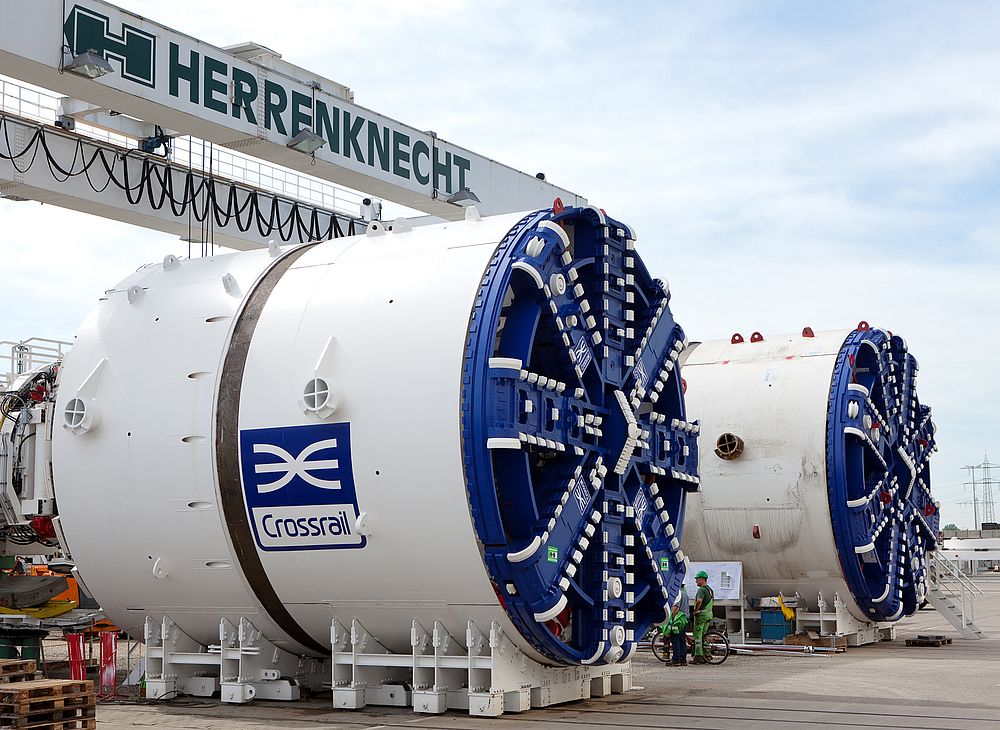
Eight TBM ladies set the pace in London
At the official breakthrough celebrations on June 4, UK Prime Minister David Cameron said: "Crossrail is an incredible feat of engineering that will help to improve the lives of working people in London and beyond. The project is a vital part of our long term plan to build a more resilient economy by helping businesses to grow, compete and create jobs right along the supply chain."
Andrew Wolstenholme OBE, Crossrail Chief Executive, praised the teams on the completion of the work: "Crossrail is being delivered on time and within budget and will transform how people travel across London. Over the last three years, our highly skilled team have worked tirelessly to build these major new tunnels under one of the world’s busiest cities. The challenge now shifts to the complicated and substantial task of fitting out the tunnels and stations to enable Crossrail services to operate.”
Herrenknecht supplied the machines together with comprehensive service solutions. These included assistance with the assembly and disassembly of the TBM at the jobsites, the provision of jobsite personnel to support the advance and the supply of cutting tools and spare parts. In addition, together with the customers Herrenknecht developed individual solutions, for example for disassembly in confined shaft conditions, for pulling machines through stations as well as the transport planning for the second use of two TBMs on another section.
"The Crossrail project demonstrates how very good organization and the close cooperation of the individual specialists make it possible to realize projects of this enormous construction logistics complexity within very demanding timelines and binding budget plans with maximum safety," concluded Dr.-Ing. E. h. Martin Herrenknecht, founder and Chairman of the Board of Management of Herrenknecht AG, on the successful completion of the tunnelling.
![[Translate to English:] [Translate to English:]](/fileadmin/user_upload/pic4_Map_Crossrail_final_en.jpg)
![[Translate to English:] [Translate to English:]](/fileadmin/user_upload/pic3_200351_Prime_Minister_and_Mayor_of_London_celebrate_completion_of_Crossrail_s_tunnelling_marathon.jpg)
![[Translate to English:] [Translate to English:]](/fileadmin/user_upload/pic6_S_719_PEP_07_Crossrail_TBM_workshop_assembly_in_Schwanau.jpg)
![[Translate to English:] [Translate to English:]](/fileadmin/user_upload/pic2_196754_10_Crossrail_tunnelling_machine_Elizabeth_breaks_through_into_Farringdon_May_2015.jpg)